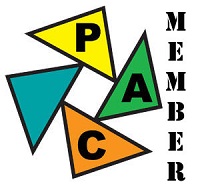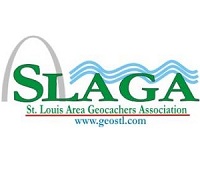
What is Coal?
Today's coal, like other fossil fuels, was at one time a living
plant and today is the carbon and other carbon based materials that
remain from that plant. Rather than decaying, these swamp plants
were preserved in wetlands that lacked a good supply of oxygen
(anoxic wetlands). Under these conditions, the organic material was
preserved. Even today fossil leaves and other plant tissues can be
seen in coal.
Different grades of coal form depending on how long, how hot,
and how much pressure the organic material is exposed to. You can
think of that fossilized swamp plant successively turning into peat
then lignite coal, sub-bituminous coal, bituminous coal, and
finally anthracite coal. As the various grades are formed, they
release hydrocarbons which become oil and natural gas. Peat is an
energy source still used in parts of the world today and is the
youngest and softest preserved plant. The oldest organic material
exposed to the most heat and pressure becomes anthracite.
Lignite contains 25 - 35% carbon which is the lowest energy
content of the coals and is found in 19 US mines. Sub-bituminous
coal contains 35 - 45% carbon, is at least 100 million years old
and can be found in just under ½ of US mines. The next grade is
known as bituminous coal. It contains 45 - 86% carbon, ranges from
100 - 300 million years old, and constitutes about 50% of US coal
production. The hardest coal is anthracite. It contains 86 - 97%
carbon having the highest energy yield and is only mined in
northeastern Pennsylvania in the US.

Where exactly is this coal located?
The coal mined from this area is called Illinois #6 or Herrin
Coal. Herrin Coal is bituminous. You may be familiar with geologic
eras which are used to tell the geologic history of earth. We can
look at this history through Stratigraphic Column or layers of
Earth.
Herrin Coal belongs to the layer of earth laid down during the
Paleozoic Era (543 - 245 million years ago) That era is divided
into periods. Herrin Coal resides in the layer of earth belonging
to the Pennsylvanian Period. During this time the state of Illinois
was actually near the equator, and at least 68% percent of the
state now lays atop coal bearing Pennsylvanian rock. Within the
Pennsylvanian Period layers of earth, subdivisions called series
formed. Herrin Coal belongs to the Desmoinesian Series. Within this
series Herrin Coal lays near the top of the Carbondale Formation,
the last subdivision in the series.
An individual layer of coal, such as Herrin, is referred to as a
bed, seam or vein. The Herrin bed ranges in thickness from 34 to 85
inches with an average of 68 inches thick. Because of changes
occurring in rock below, Herrin Coal is near the surface in some
areas and as deep as 1200 feet in others.

How do we get that coal?
At least two primary mining techniques have been used in this
area, Room and Pillar, and Longwall mining.
Early mining in the area such as in the Old Keller Mine was done
by the Room and Pillar method. Rooms were cut into the coal bed
leaving columns of coal, to help support the mine roof. Room sizes
were about 20-30 feet wide and the pillars up to 100 feet wide
resulting in a grid-like pattern of rooms and pillars. When mining
reached the end of a panel or the property line workers began
retreat mining in which the workers mine as much coal as possible
from the remaining pillars until the roof falls in eventually
resulting in an abandoned mine.
Old Ben #21 used longwall mining technique to extract the coal.
Longwall mining machines have several coal shearers, and the entire
process is mechanized. Longwall mining machines are about 800 feet
wide and about 10 feet tall. Longwall miners extract rectangular
blocks of coal as wide as the mining machinery and up to 12,000
feet long. These massive blocks are called panels, and as a
longwall miner advances along a panel, the roof behind the miner's
path is allowed to collapse.
Since this bituminous coal is not 100% carbon, waste products
form in the production of usable coal once it is extracted from the
bed. The majority of solid waste material is referred to as slag.
When the waste products are mixed with water, the mixture is a
slurry. The slurry is then kept in a containment cell. You will
visit on of the Slurry Cells from Old Ben Mine #21.

When was coal mined from this area?
Keller Mine was the first to be sunk in the area in the winter
of 1905 -1906. In December 1905 the population of Sesser, IL was
17. By March 1906 there were around 600 residents. The mine was
bought by Old Ben and became Old Ben #16. It was abandoned in 1923.
The second mine in the area was first owned by Horn Parkhill and
Diamond Coal Company and then purchased by Modern Coal Corporation
and eventually renamed the Southern Gem Mine. It was known for
having the lowest mortality rate in the state. Several companies
owned mines in the first 4 decades of the 1900s and then closed or
abandoned the mines. Old Ben bought much of the area and continued
mining operations. Most of the land underneath you while visiting
this EarthCache is Old Ben #21 which was in operation from 1960
-1991.


Your Requirements to claim this
EarthCache as found:
- Post a picture of you and/or your gps at the Old Keller Mine
location with two brick buildings in the background. Additional
Waypoint for buildings provided. Please take picture from side of
road.
- Post a picture of you and/or your gps with Old Ben 21 Slurry
Cell in the background. Additional Waypoint provided.
- Identify the Grade of coal mined here. Please email me the
answer.
- Name the coal bed mined here. Please email me the answer.
- Calculate the approximate volume of this one Slurry Cell in
CUBIC FEET. Please email me the answer.
sources
- www.isgs.uiuc.edu
- coalgeology.com
- www.museum.state.il.us
- www.sesser.org

